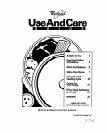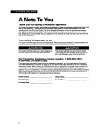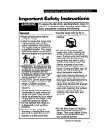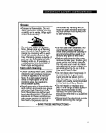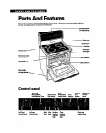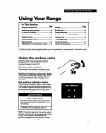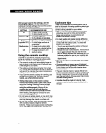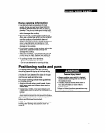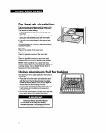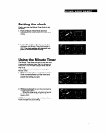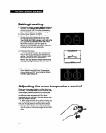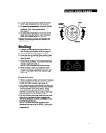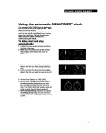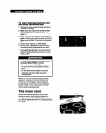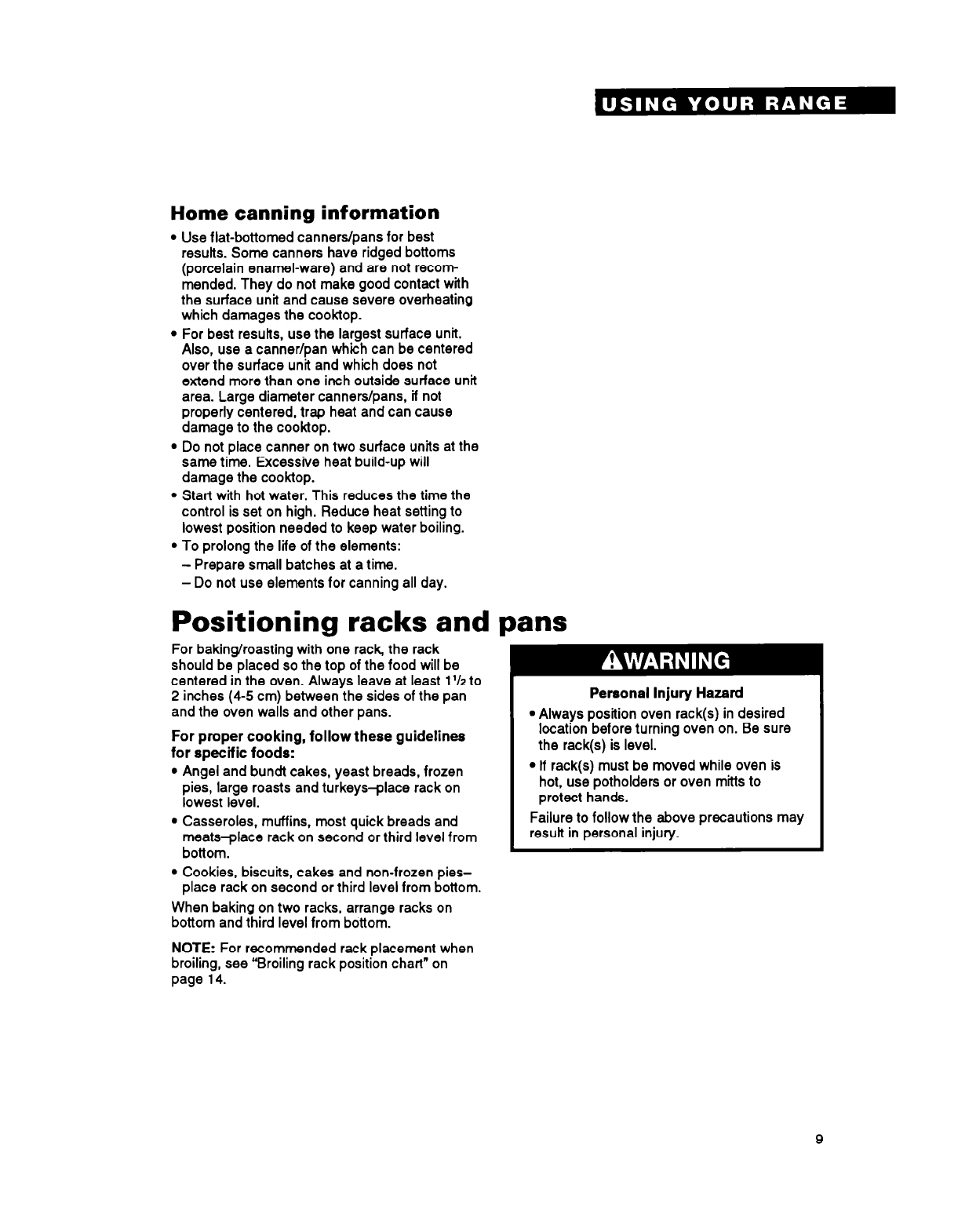
Home canning information
l
Use flat-bottomed canners/pans for best
results. Some canners have ridged bottoms
(porcelain enamel-ware) and are not recom-
mended. They do not make good contact with
the surface unit and cause severe overheating
which damages the cooktop.
l
For best results, use the largest surface unit.
Also, use a canner/pan which can be centered
over the surface unit and which does not
extend more than one inch outside surface unit
area. Large diameter canners/pans, if not
properly centered, trap heat and can cause
damage to the cooktop.
l
Do not place canner on two surface units at the
same time. Excessive heat build-up will
damage the cooktop.
l
Start with hot water. This reduces the time the
control is set on high. Reduce heat setting to
lowest position needed to keep water boiling.
l
To prolong the life of the elements:
- Prepare small batches at a time.
- Do not use elements for canning all day.
Positioning racks and pans
For baking/roasting with one rack, the rack
should be placed so the top of the food will be
centered in the oven. Always leave at least 1% to
2 inches (4-5 cm) between the sides of the pan
and the oven walls and other pans.
For proper cooking, follow these guidelines
for specific foods:
l
Angel and bundt cakes, yeast breads, frozen
pies, large roasts and turkeys-place rack on
lowest level.
l
Casseroles, muffins, most quick breads and
meats-place rack on second or third level from
bottom.
l
Cookies, biscuits, cakes and non-frozen pies-
place rack on second or third level from bottom.
When baking on two racks, arrange racks on
bottom and third level from bottom.
NOTE: For recommended rack placement when
broiling, see “Broiling rack position chart” on
page 14.
Personal Injury Hazard
l
Always position oven rack(s) in desired
location before turning oven on. Be sure
the rack(s) is level.
l
If rack(s) must be moved while oven is
hot, use potholders or oven mitts to
protect hands.
Failure to follow the above precautions may
result in personal injury.



